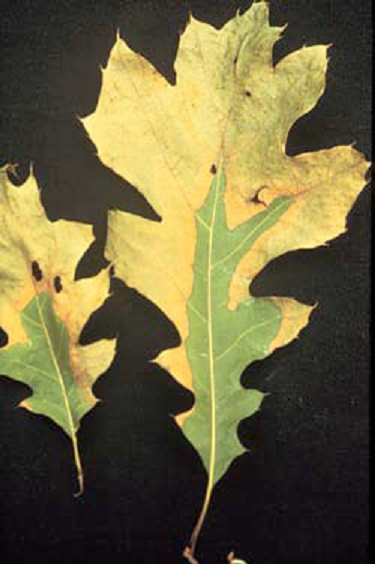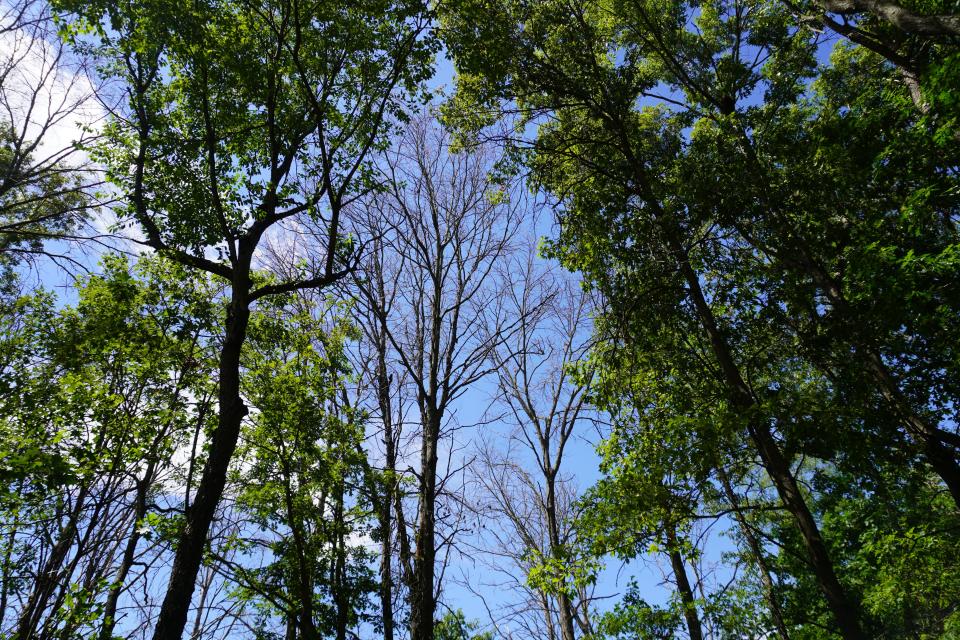Gardening: Pruning trees now can help prevent oak wilt

January is not typically the time of year when we think about doing yard work, unless you consider removing outdoor Christmas decorations yard work! However, due to a deadly disease which is spreading among our most stately shade tree—the venerable oak, the middle of winter is the only time when we should consider doing any type of pruning of oak trees in order to reduce the potential for infection by the pathogen that causes oak wilt. Wounds caused by pruning cuts during the growing season attract an insect that spreads the disease, and by pruning during the winter months, we can avoid the potential “overland” spread of this disease.
What is oak wilt?
Oak wilt is a very serious and often deadly disease of oaks, specifically the oaks in the red or black oak group. The fungal pathogen that causes the disease (Bretziella fagacearum) has been known to exist in Ohio for many decades. Some years, it appears to be worse than others. Oak wilt is not like damage done to ash trees by the emerald ash borer that spreads rapidly, almost like a tidal wave moving in one direction. Oak wilt radiates out to other oak trees, but advances at a slower pace, but even then, can cause tree death in a single season, and often in a matter of weeks. When not managed, it can continue to spread or move out across an oak-dominated landscape, park or woodlot.
The fungus invades the sapwood, which is the water-conducting tissue of the tree. In addition to its presence in the tree, the fungus also triggers a defense reaction by the tree to stop the fungal spread. This response by the tree interferes with water uptake from the tree roots upward to branches and leaves in the canopy of the tree. The result is wilting, where leaves turn brown from the tips, inward to the base of the leaf where it is attached to the branch.
Gardening: Urban farming on the upswing in Columbus area

How is oak wilt spread?
The fungal pathogen that causes oak wilt can be spread in two ways. The fungus is spread by sap-sucking picnic beetles (Coleoptera: Nitidulidae), which are attracted to the smell of sap when oaks are pruned or wounded in some way. These beetles are active during the growing season, particularly in spring, when many homeowners take advantage of warmer weather to prune shade trees and other woody ornamentals.
The fungus can also be spread from an infected tree to other nearby oaks that have roots grafted to each other underground. This typically occurs in locations where several mature oaks are growing close together in a forested setting such as a park or other wooded location. Single oaks in a home landscape are not susceptible to this underground mode of transmission.
Red oaks most susceptible
While all oaks are susceptible to the fungus that causes oak wilt, those in the red or black group; black, pin, northern and southern red, scarlet, shingle and shumard oak are extremely susceptible and can die within a few weeks of infection. Oaks in the white group that include bur, chinquapin, post, swamp white, and white oak are more tolerant of the disease and can even survive infection for one or more years while displaying declining symptoms.
When the initial infection occurs, leaves on branches or large limbs will wilt. This is called flagging. The leaves on those branches will fall prematurely and the tree will appear more like autumn in the middle of summer. The fungus will then continue to move throughout the tree.

Gardening:Tips to protect trees and shrubs this winter so they'll spring back next year
Diagnosing oak wilt
Not all wilt symptoms on oak trees can be attributed to the fungus that causes oak wilt. Drought, insect damage, soil compaction, and other abiotic factors can cause symptoms similar to those of oak wilt. The only way to determine if a tree is infected with the pathogen that causes oak wilt is to have a branch tested at a laboratory for presence of the pathogen. The OSU Plant and Pest Diagnostic Clinic conducts this type of testing; information on submitting a sample for testing can be found here: https://ppdc.osu.edu/.
More information about oak wilt can be found here: https://ohioline.osu.edu/factsheet/plpath-tree-02.
Mike Hogan is an Extension educator, Agriculture and Natural Resources, and associate professor with Ohio State University Extension.
This article originally appeared on The Columbus Dispatch: Pruning trees in winter will prevent spread of oak wilt disease

